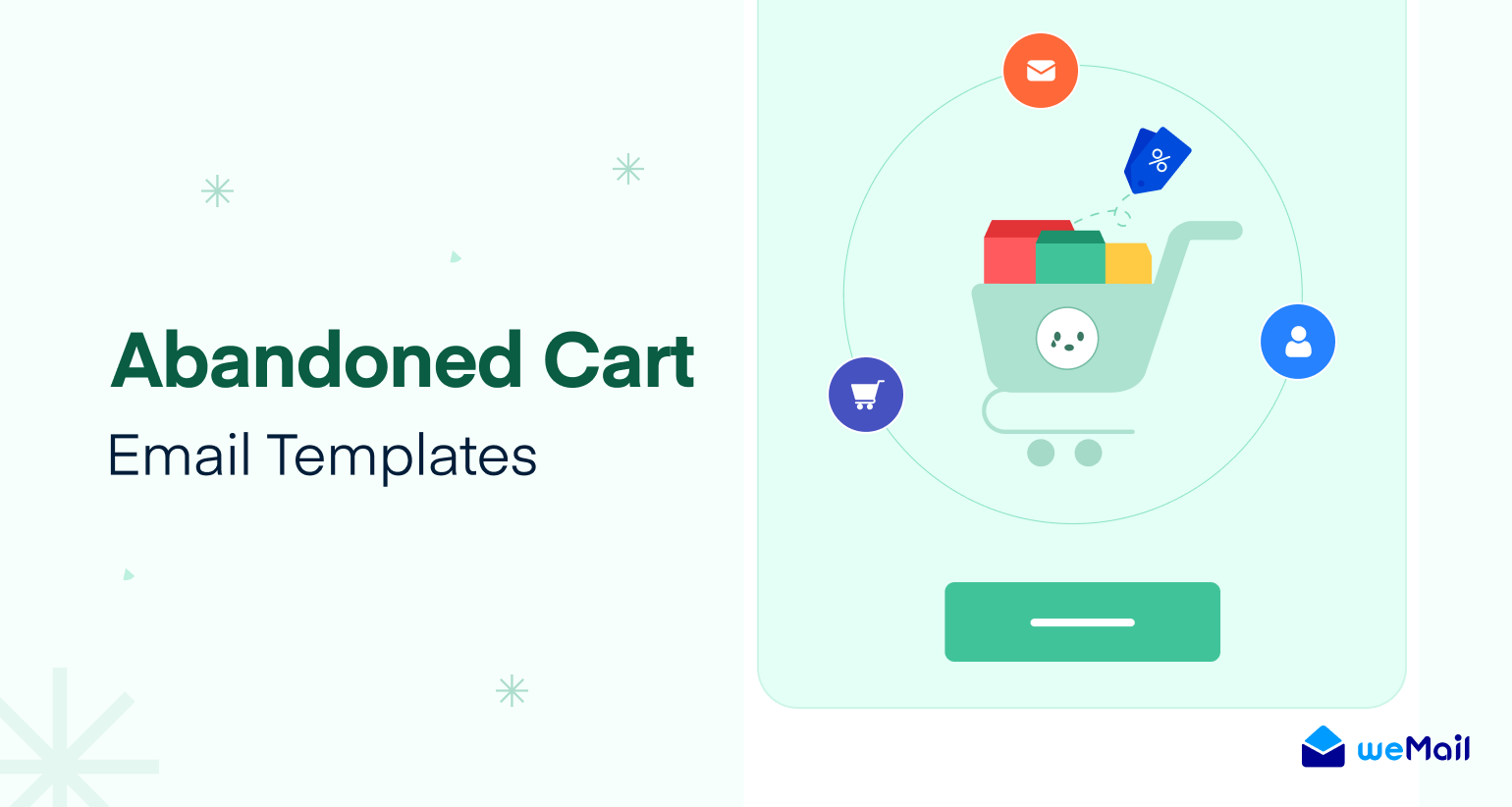How to do email marketing for accountants

Certified accountants, accounting firms, or finance professionals are bound to maintain a high-end relationship with their clients. Besides that, they always need to find fruitful business prospects.
Email marketing can play a big role in fulfilling this requirement. It works by following up with clients’ demands, sharing deliverables, and maintaining engaging customer relationships.
This blog will show you email marketing for accountants’ best practices and how to use this marketing channel to grow your accounting career.
Benefits of email marketing for certified accountants

After the revolutionary achievement of AI and automation, marketing technologies have evolved a lot, and channels through different mediums like videos, paid advertisements, social media posts, reels, etc.
Still, out of all those mediums, email marketing (almost looking like a dinosaur) remains highly relevant.
Like any other business professional, accountants also benefit from email marketing. Let’s check some of the highlighted ones –
a. Personalized communication
Email marketing works in a personal way, and you can reach a client directly via email communication.
You can share regular updates, progress reports, and ongoing issues, and ask for resources if anything is necessary via email communication.
You can get help from any email marketing platform to achieve all these benefits. For example, software like weMail brings you a lot of features like automation, trigger-based email sending, and segmentations.
You can tailor the content by following your client’s needs, and maintain a sustainable relationship in a consistent and personalized way.
b. Lead generation and lead nurturing
Finding suitable prospects is crucial for accounting professionals. Email marketing is a proven way to get you this. Through your website, it’s possible to implement lead capture forms, or optin forms and collect leads to make impeccable email lists of interested people.
The whole process is connected with content marketing. If you have a brand website, you can publish relevant content for your services, resources, and shareable industry knowledge or insights. And, this organically draws niche people to your site, and an email marketing tool brings assistance to turn these visitors into your potential clients.
c. Brand awareness
If you can maintain a consistent quality and provide value through your email content, it will surely increase your brand name and increase customer loyalty.
Also, with strategic email campaigns, you can spread brand awareness and improve the retention rate.
d. Client relationship
An accountant or financial firm utilizes email communication regularly. It brings a closeness to both parties if maintained well. When you provide valuable content, progress updates, offers, or announcements it accomplishes the professional needs.
Hence, there is a parallel to this – you can maintain communication to keep the client in the loop, solve their problem, and ask them if they need further assistance even after the deal is done.
This makes your client feel more loyal to your service and improves business relationships and overall client satisfaction.
e. Affordable marketing channel
Out of all the marketing channels, email marketing is the most affordable. For example, you can start sending newsletters with weMail or Mailchimp for free, and when you need to add more capacity and features – the pricing won’t be that much if compared to video, paid ads, or social media marketing.
f. Easy event promotion
Last but not least, promote any upcoming event, product/service launch, or marketing campaign through email marketing. It will be effective because the people on your email list will be real, interested, and interactive if the event makes them interested.
How to utilize email marketing for accountants

Here comes the major part of the blog. If you are a certified accountant or running an accounting farm, how to utilize email marketing to get the best results?
We’ve sorted some of the proven ways to use email marketing and bring your accounting business a better edge –
1. Build a robust email list
Building an email list for an accountant can be quite effective, especially if you’re targeting clients interested in financial advice, tax tips, and accounting services.
Here are the steps you should follow to create a quality email list for your accounting firm –
Create Valuable Lead Magnets
You can offer free e-books on relevant topics like tax planning, budgeting, or business accounting basics.
Also, providing downloadable templates for budgeting, invoice tracking, or expense management would be very helpful for your audience and inspire them to enroll.
Besides that, a good way to generate leads is by sharing a tax preparation checklist or year-end financial checklist which is highly relevant for potential clients.
Use a dedicated landing page
To accomplish the aforementioned goal, you need to create a clean and professional landing page where visitors can subscribe to receive your lead magnets or newsletter.
You must ensure the simplicity of the page, write a clear headline, a description that reflects your professional goal or motto, and the simplest and most engaging subscription form or option.
Keep your email list clean
Maintaining a clean email list is important for good deliverability rates, high engagement, and reducing spam complaints. Take a look at the following tips to keep a alive and clean email list –
- Remove Inactive Subscribers from time to time. To do this, you get to identify subscribers who haven’t opened or clicked on your emails in the past 3-6 months.
- Verify New Sign-Ups. You can add email verification tools. Also, there is a double opt-in process where subscribers confirm their email address before being added to the list.
- Eliminate Hard Bounces
- Segment subscribers in a different list who have a low engagement rate
- Keep an open eye for spam complaints
2. Audience segmentation
Audience segmentation helps to provide more personalized accounting services to your clients.
According to DMA, 25% of revenue share comes from a segmented list of emails, and sending targeted emails to these segments brings 30% of revenue.
Segmented emails going to be more relevant to your clients, making them more likely to open, read, and engage with the content. When emails cater to specific interests, behaviors, or needs, they feel more personalized, which can significantly boost open rates.
After you implement audience segmentation, a set of tailored messaging speaks directly to each client group’s preferences. This helps build trust and rapport and you will be able to make them feel understood and valued.
3. Create email content that matters
Sending emails is all about sending values. And, you can do that by creating different kinds of content for your subscribers.
And, for any kind of content, email copy in all the sections needs to be highly engaging and converting. And cater the copy to the following parts of the email –
- subject line
- body copy
- call-to-action (CTA)
- email sign-off
Creating a successful newsletter involves a blend of engaging content, attractive design, and strategic timing.
4. Design a responsive email template

After a recipient opens your email, the design grabs his/her primary attention. A visually engaging email is what you need in the first place for conversion. That’s why your email template should follow email design best practices –
An email design is a process of creating the visual outlook and most of the UX of your email marketing campaign.
It’s not about how beautifully you create an email body, what matters is how effectively your email works for visual interaction.
Suppose, you have created a vivid nice email with irrelevant images. What happens then? It won’t do the talking and guide customers to body copy.
Here’s how to create a responsive email design –
- Create a base template or module design first
- Go for a responsive design earnestly
- Maintain consistency
- Go for a dynamic framework
- Incorporate UX design best practices into your email design
- Maintain the hierarchy based on your CTA
Responsive email design is so crucial because if rightly implemented, it surely creates a good user experience, and influences the decision-making process of a subscriber.
5. Do a/b testing and optimize
Effective email marketing thrives on continuous improvement—it’s not a one-time task. Regularly testing and optimizing email campaigns are essential to achieving meaningful results and meeting your content marketing objectives.
These practices help accounting professionals consistently deliver content that resonates with their target audience.
A/B testing offers a powerful way to experiment with different email components, such as subject lines, sender names, CTAs, content, send times, or design.
To start, select a small sample of your subscribers as a test group. Split this sample into two groups, sending each a different version of the email. Then, analyze key metrics, such as open rates or click-through rates, to identify which version (A or B) performs better.
When conducting A/B tests, be sure to change only one element at a time (e.g., subject line, CTA, content, or sender name) while keeping the rest of the email consistent. This approach ensures that you’re accurately testing the impact of a single variable.
6. Initiate your email marketing campaign
Now that all of your elements are in one place and your strategic plan is settled, it’s time to begin sending an email campaign. Check the following steps –
First, schedule your emails to match your clients’ peak engagement times, whether that’s specific times of the day or certain days of the week, depending on the type of campaign.
You might also time your campaign around key events, like tax season or regulatory changes, to ensure relevance and increase engagement.
Creating an email marketing calendar can help you refine your scheduling strategy. For tips on setting up and organizing your calendar, be sure to check out our guide.
Also read: How to Create an Email Campaign Using weMail in 5 Easy Steps
7. Track performances to improve
Tracking email marketing performance is essential for evaluating engagement, optimizing future campaigns, and improving ROI. Here’s a guide on key metrics and methods:
- Open Rate: Measures how many recipients opened your email, indicating subject line effectiveness.
- Click-Through Rate (CTR): The percentage of recipients who clicked on links in the email, showing content relevance.
- Conversion Rate: Tracks how many clicked-through users completed a desired action (like purchases, and sign-ups).
- Bounce Rate: Monitors emails that weren’t delivered; helps maintain a clean mailing list.
- Unsubscribe Rate: Shows how many opted out, helping to refine list targeting and content.
- Spam Complaints: Indicates how many users marked the email as spam; a high rate suggests content or targeting issues.
By monitoring metrics like open rates, click-through rates, conversions, and unsubscribe rates closely, you can get valuable insights into the overall effectiveness of your email marketing campaigns.
Final thoughts on email marketing for accountants
Email marketing offers accountants a powerful tool to build stronger client relationships, establish authority in the industry, and drive business growth.
By delivering personalized, relevant content directly to clients’ inboxes, accountants can enhance engagement and trust, ultimately leading to increased client retention and referrals.
So what do you think? Tell us what should be your next step for email marketing as an accounting professional.



